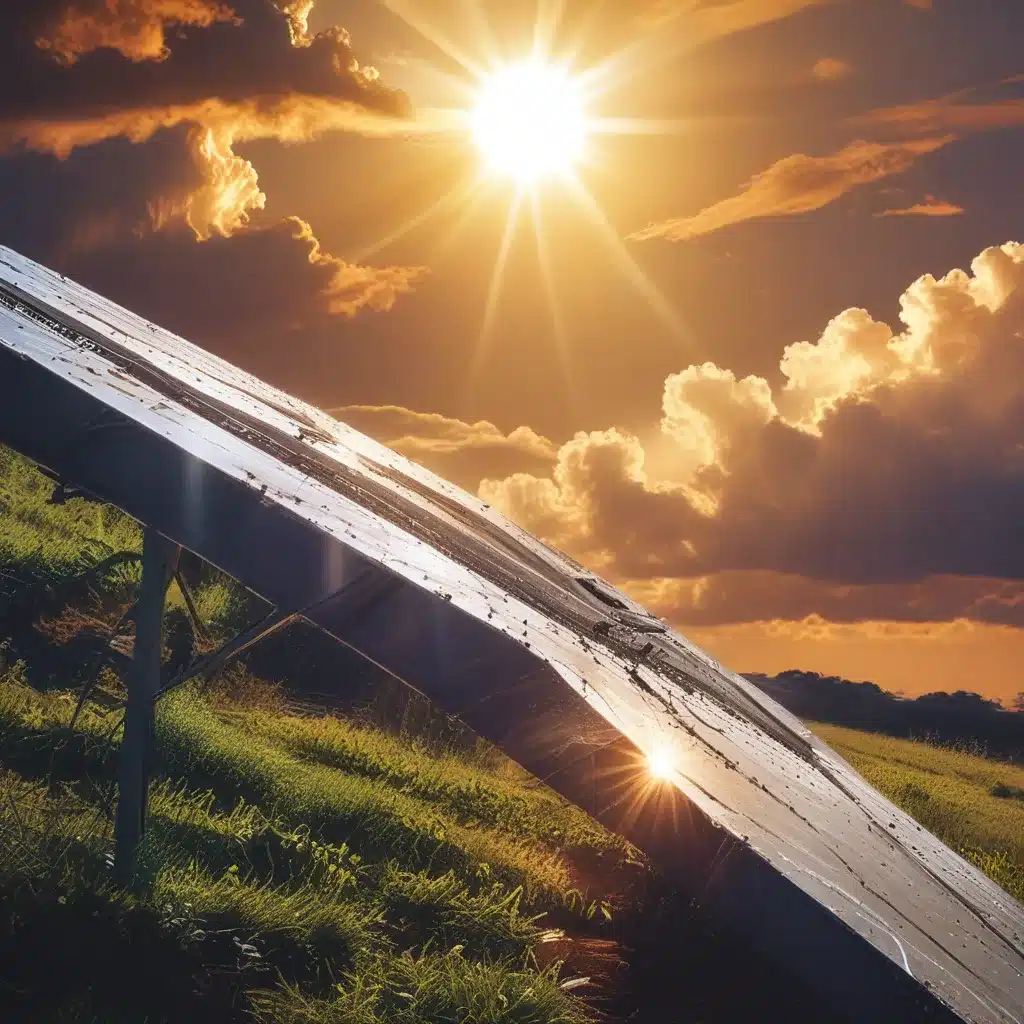
The Sunny Side of Solar
As a self-proclaimed eco-warrior, I’ve always been passionate about renewable energy. But when I stumbled upon the wealth of environmental benefits that solar power offers, my inner tree-hugger went into overdrive.
According to the U.S. Department of Energy, solar energy has a crucial role to play in reducing greenhouse gas emissions and mitigating the devastating effects of climate change. And that’s just the tip of the iceberg! Solar also has the power to improve air quality, conserve water, and even provide valuable ecosystem services.
Now, I know what you’re thinking – how can something as simple as converting sunlight into electricity do all that? Well, my friends, let me enlighten you on the environmental superpowers of solar energy.
Clearing the Air with Solar
Remember those hazy, smog-filled days when you could barely see the horizon? Well, solar power is here to clear the air, quite literally. Traditional fossil fuel-based power plants are notorious for spewing harmful pollutants into the atmosphere, contributing to poor air quality and respiratory issues.
Studies have shown that the widespread adoption of solar energy could significantly reduce the emission of particulate matter, nitrogen oxides, and sulfur dioxide – all of which are major contributors to smog, acid rain, and a host of respiratory ailments. And the best part? Solar panels don’t produce any direct air pollution at all, making them a clean and sustainable alternative to fossil fuels.
So, not only will switching to solar help you breathe easier, but it’ll also reduce the strain on your local healthcare system. Talk about a win-win for both you and the environment!
Conserving Water, One Ray of Sunshine at a Time
Let’s talk about another precious resource that solar power helps safeguard: water. Conventional power plants, particularly those that rely on fossil fuels or nuclear energy, require massive amounts of water for cooling and other operational processes. This water withdrawal can put a significant strain on local water supplies, especially in drought-prone regions.
According to the U.S. Energy Information Administration, solar photovoltaic (PV) systems use virtually no water during their operational phase, making them a far more sustainable option compared to their water-guzzling counterparts. And when you consider the fact that solar power can also be used to desalinate and purify water, it becomes clear that the sun’s rays can help us solve our water woes as well.
Imagine a future where our power plants don’t compete with agriculture and local communities for precious water resources. Thanks to solar, that future is closer than you might think.
Enhancing Ecosystems, One Solar Farm at a Time
Okay, let’s set the record straight – I’m not just an air-quality and water-conservation enthusiast. I’m also a hardcore nature lover, and solar power has some pretty nifty tricks up its sleeve when it comes to preserving and enhancing local ecosystems.
As the Department of Energy points out, solar energy installations can actually provide valuable ecosystem services, such as carbon sequestration, pollination, and stormwater management. And when it comes to the impact on wildlife and their habitats, the solar industry is working hard to develop strategies and technologies that can avoid or minimize any adverse effects.
In fact, some forward-thinking solar companies, like Solar A Systems Inc., are even exploring ways to integrate solar farms with agricultural practices, creating “agrivoltaic” systems that can benefit both food production and renewable energy generation. Talk about a marriage made in eco-friendly heaven!
So, the next time you see a sprawling solar array, don’t just think of it as a source of clean energy – think of it as a thriving ecosystem, bustling with life and contributing to the overall health of the environment.
The Path to a Brighter, Greener Future
As you can probably tell, I’m pretty jazzed about the environmental benefits of solar energy. But the best part is, we’re just scratching the surface of what this remarkable technology can do.
According to the Department of Energy’s Solar Futures Study, solar energy deployment could require as much as 57 million acres of land by 2035 – that’s only about 0.3% of the contiguous United States. And with continued research and development, the solar industry is working hard to minimize the impact on wildlife and ecosystems, while maximizing the environmental upsides.
So, whether you’re an air quality enthusiast, a water conservation crusader, or a nature lover like me, solar power is the solution that can check all of those boxes and more. And as the technology continues to evolve and become more accessible, the path to a brighter, greener future is looking sunnier than ever.
Now, if you’ll excuse me, I’m going to go bask in the glory of the sun and dream about a world powered by the ultimate renewable resource. Who’s with me?


